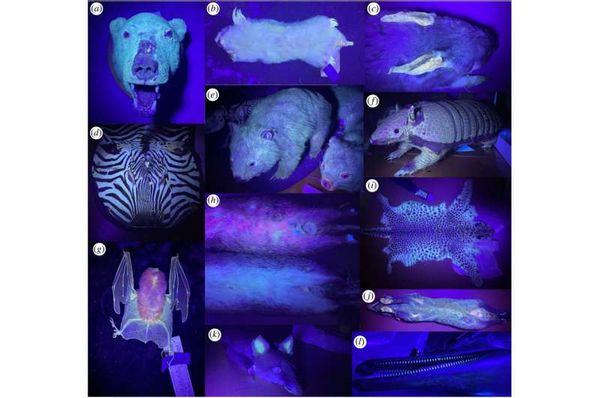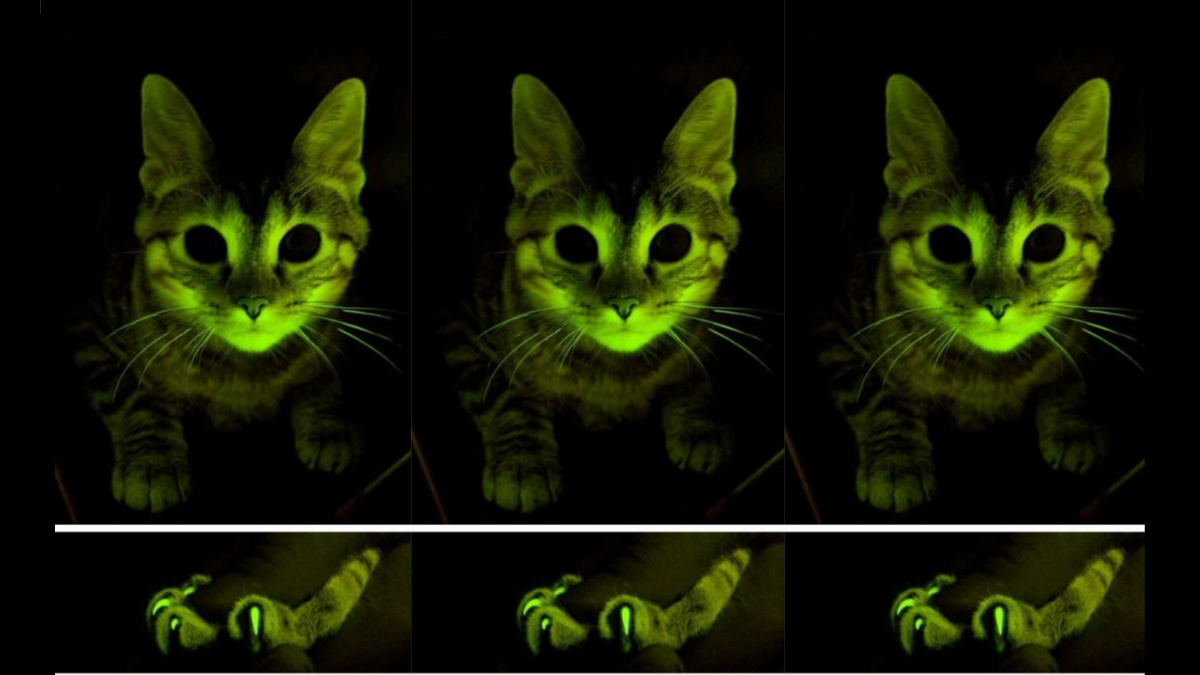In 2011, Mayo Clinic researchers genetically modified cats as part of a study involving feline immunodeficiency virus (FIV, the cat version of HIV). Those cats were also injected with a jellyfish gene responsible for bioluminescence — a common strategy used by scientists to track genes. (If it glows, it shows.) Though the research objective was not to fluoresce cats, felines that give off a green glow under ultraviolet light were a byproduct of the study.
Glowing green kittens illuminated from within seems to be a story ripe for science fiction, and indeed it looked that way when internet users posted claims of such furry felines on social media channels, including in posts shared on Reddit in 2018 and again in 2022:
TIL that’s scientists created glow in the dark cats using jelly fish genes in order to research a cure for feline aids. The trait is even genetic and can be passed to subsequent generations.
byu/Paco-Vodka intodayilearned
The above claim refers to a 2011 study published in the peer-reviewed journal Nature Methods titled, “Antiviral restriction factor transgenesis in the domestic cat,” which described research conducted by Mayo Clinic scientists studying feline immunodeficiency virus (FIV), a virus similar to human immunodeficiency virus (HIV) that causes an AIDS-like disease in cats.
Though the study goal was not purely to create glowing cats, said outcome was a byproduct of the research methodology. We have rated this claim True.
As part of their research, scientists developed an immunization strategy through gamete-targeted lentiviral transgenesis, or genome modification, in which a gene found in rhesus macaque monkeys called TRIMCyp and known to block FIV was inserted into feline oocytes (eggs) before sperm fertilization.
To track TRIMCyp in felines, scientists also injected cat cells with green fluorescent protein (GFP), a marker protein produced by jellyfish that emits a green fluorescence when exposed to ultraviolet light that is commonly used to track a cell or gene (in this case, TRIMCyp) as it progresses. If the cell being studied produces a green fluorescence, scientists infer that the cell expresses the targeted gene as well, according to the Embryo Project Encyclopedia at Arizona State University. .
And yes, it also makes the cats glow green, according to a Sept. 11, 2011 news release.
 (Nature Methods)
(Nature Methods)
Gene-edited cats also produced kittens with proteins that glowed green, which researchers said indicated that similar gene therapies may be advanced to combat immunodeficiency disease caused by either virus. At the time, the study was covered by a variety of reputable news outlets, including Live Science, BBC, Smithsonian, and The Guardian, to name a few.
But lab-manipulated kitties aren’t the only animals known to glow green. In fact, there are a wide variety of animals that also naturally glow when exposed to UV light, from scorpions and spiders to frogs and marsupials.
And yes, even cats.
According to research published on Oct. 4, 2023, in The Royal Society Publishing, at least 125 species of mammals exhibit the biological phenomenon of fluorescence under light – certain animals more than others. Electromagnetic light is reflected in proteins or pigments in scales, skin, and fur. As a result, mammals with white and light-colored fur fluoresce more than those with darker pigmentation. At the same time, aquatic species like the platypus exhibited less illumination than those that burrow, live in trees, or on land.
“Based on our results, we think fluorescence is very common in mammals. In fact, it is likely the default status of hair unless it is heavily pigmented. This doesn't mean fluorescence has a biological function—it may just be an artifact of the structural properties of unpigmented hair,” wrote the study authors in a news release at the time.
 (Royal Publishing Society)
(Royal Publishing Society)

